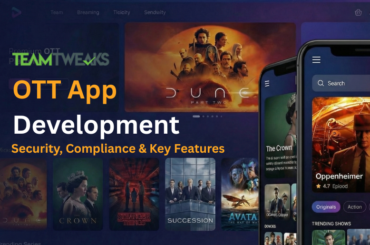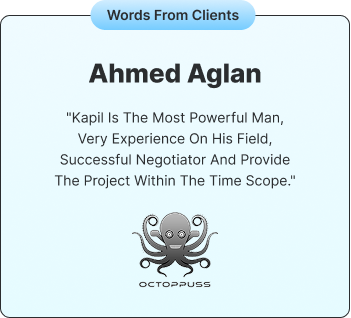In Bangalore and several other parts of India. Water scarcity has become a pressing issue as rapid urban expansion continues unchecked. Once renowned for its numerous lakes, Bangalore now faces a severe water shortage. Due to unchecked urban sprawl and environmental mismanagement. This blog explores the causes of this crisis, including population growth and urbanization. And examines its impacts on public health, the local economy, and the environment. Additionally, we look into potential solutions to address this challenges. And ensure a sustainable future where water is available to all. Join us as we explore the complexities of water scarcity in Bangalore and discuss possible pathways to resolution. With a particular focus on smart water management using IoT .
Why Water is Important to the World?

Also water is essential for life on Earth and plays a crucial role. In sustaining ecosystems, supporting agriculture, and ensuring human health. In addition Smart water management companies are at the forefront of addressing water scarcity by leveraging technology to optimize water use, detect leaks, and manage resources more efficiently. These IoT companies in India are pivotal in creating sustainable solutions to ensure water availability for future generations. Here are some key reasons why water is important to the world.
Essential for Life: Water is vital for all living organisms. It is used in various biological processes, including digestion, circulation, and temperature regulation. Without water, life as we know it would not exist.
Supports Ecosystems: Water is essential for maintaining healthy ecosystems. It provides habitats for aquatic plants and animals, supports biodiversity, and helps regulate the climate.
Key for Agriculture: Water is critical for agriculture and food production. It is used for irrigation, livestock watering, and processing agricultural products. A reliable water supply is essential for ensuring food security.
Human Health: Access to clean and safe drinking water is crucial for human health. Waterborne diseases can spread rapidly in communities without access to clean water, leading to illness and death.
Industrial and Economic Development: Water is used in various industries, including manufacturing, energy production, and transportation. A reliable water supply is essential for economic development and growth.
Cultural and Recreational Value: Water has cultural and recreational value. It is used for spiritual ceremonies, recreation activities like swimming and boating, and as a source of inspiration for artists and writers.
Climate Control: Water helps control Earth’s climate. It absorbs and releases heat, affecting weather and climate.
What is the Importance in Addressing Water Scarcity?
Access to clean and safe water is crucial for human health, as waterborne diseases like cholera, typhoid, and dysentery are more common in areas. With water scarcity and poor water quality. Additionally, water is essential for agriculture, and without enough water, crop yields can decrease. Leading to food shortages and higher prices. Water scarcity can also have a significant economic impact, especially in areas where agriculture is a major source of income. As it can result in job losses, reduced productivity, and increased poverty. Furthermore, water scarcity can harm the environment by disrupting ecosystems and biodiversity, leading to habitat destruction and loss of species. Finally, water scarcity can also create social instability, as conflicts over water resources can arise. Addressing water scarcity is crucial for promoting human health, food security, economic stability, environmental sustainability, and social harmony.
What is Zero Day?
Zero Day refers to the day when a location’s water sources are fully depleted, leaving no accessible fresh water for residents. This crisis is becoming increasingly common globally, with several countries nearing or experiencing Zero Day scenarios.
How Many Countries Are Nearing Zero Day?
India: Parts of India, including Chennai and Bangalore, have experienced severe water shortages, with experts warning of impending Zero Day scenarios if drastic measures are not taken.
South Africa: Cape Town famously faced the threat of Zero Day in 2018, prompting severe water conservation measures and highlighting the need for sustainable water management.
Iran: Several regions in Iran are experiencing water scarcity, with some cities, including Isfahan and Tehran, at risk of reaching Zero Day if water management practices are not improved.
Mexico: Cities like Mexico City face significant water challenges due to population growth, infrastructure issues, and climate change, leading to concerns about future water availability.
Australia: Parts of Australia, including major cities like Melbourne, have faced water shortages, emphasizing the importance of conservation and sustainable water use.
Population Growth and “Zero Day” Scenarios
Population growth plays a significant role in accelerating “zero day” scenarios, where a region exhausts its water supply. As populations increase, the demand for water rises, putting pressure on limited water resources. This heightened demand can lead to overexploitation of groundwater and surface water sources, ultimately depleting them faster than they can be replenished. Regions experiencing rapid population growth without adequate water management measures are particularly susceptible to “zero day” scenarios.
Importance of Sustainable Water Management Practices
Sustainable smart water management practices are essential to address the challenges posed by population growth and water scarcity. These practices focus on efficient use, conservation, and replenishment of water resources to ensure their availability for future generations. Examples include rainwater harvesting, wastewater recycling, efficient irrigation techniques, and implementing water conservation measures in households, industries, and agriculture.
By adopting sustainable water management practices, communities can reduce their water footprint, minimize waste, and improve overall water efficiency. These practices are crucial for mitigating the impacts of population growth on water resources and ensuring water security for all.
What is the Current Water Situation in Bangalore?
Bangalore doesn’t have enough water for everyone. The city needs about 2,600-2,800 million liters of water every day, but it doesn’t get that much. Because of this, many people rely on water tankers. The government is trying to help by setting prices for water tankers and punishing people who waste drinking water. But people think more needs to be done, like saving water and planning better for the future, so everyone can have enough water.
The cost of water tankers in Bangalore has increased due to the city’s ongoing water crisis. With the demand for water exceeding the available supply, many residents are forced to rely on tankers for their daily water needs.
The cost of water tankers was around 1500 rupees. However, due to the current situation, the cost has increased significantly to around 5000 to 6000 rupees. This rise in prices has made it challenging for many residents to afford this essential resource, highlighting the severity of the water scarcity issue in the city.The government has stepped in to regulate the prices of these tankers, but the cost remains high, making it difficult for some residents to afford this essential resource.
Understanding the Water Crisis in Bangalore
Water shortage in Bangalore has reached critical levels, leading to a severe water crisis in the city. The water problem in Bangalore is multifaceted, with several key factors contributing to the growing scarcity of this vital resource.
Rapid Urbanization
One of the primary causes of the water crisis in Bangalore is rapid urbanization. The city’s exponential growth has led to an increased demand for water, as more people move to the city in search of opportunities. This has put immense pressure on the existing water infrastructure, which is struggling to meet the needs of the growing population.
Impact on Natural Water Recharge Areas
Urban sprawl has also played a significant role in the water shortage in Bangalore. As the city expands, natural water recharge areas such as wetlands and open spaces are being replaced by concrete structures, preventing rainwater from seeping into the ground and replenishing aquifers. This has led to a depletion of groundwater levels, making it increasingly difficult to access clean and safe drinking water.
Overexploitation of Groundwater
The overexploitation of groundwater is another key factor contributing to the water problem in Bangalore. The rate at which groundwater is being extracted far exceeds the rate at which it is being replenished, leading to a rapid depletion of aquifers. Private borewells, which are often unregulated, further exacerbate this issue, leading to the drying up of wells and further aggravating the water crisis.
Climate Change and Variability in Rainfall
Climate change has also had a significant impact on the water shortage in Bangalore. Changes in rainfall patterns have led to unpredictable and often insufficient rainfall, affecting the city’s water sources. Increasing temperatures and erratic weather conditions further compound the problem, making it challenging to manage water resources effectively.
Pollution of Water Sources
Pollution is another critical factor contributing to the water problem in Bangalore. Industrial waste and untreated sewage contaminate water sources, making them unfit for consumption. Agricultural runoff, which contains fertilizers and pesticides, also adds to the pollution of water bodies, further reducing the availability of clean water.
Addressing the Water Crisis in Bangalore
Addressing the water shortage in Bangalore will require a concerted effort from all stakeholders. Sustainable urban planning practices that prioritize green spaces and rainwater harvesting can help mitigate the impact of urban sprawl. Regulation of groundwater extraction, especially from private borewells, is essential to ensure the sustainable use of groundwater resources.
Impacts of Water Scarcity
Water scarcity has far-reaching impacts on various aspects of life, from public health to the economy and the environment. Understanding these impacts is crucial for developing effective strategies to address the challenges posed by water scarcity.
Impact on Public Health
One of the most significant impacts of water scarcity is on public health. The lack of access to clean drinking water can lead to waterborne diseases such as cholera, typhoid, and dysentery. Contaminated water sources can also contribute to the spread of other diseases, leading to a higher incidence of illness and mortality.
Economic Impact
Water scarcity can have a significant economic impact, particularly in agricultural and related industries. Farmers may face reduced crop yields or even crop failure due to inadequate water supply for irrigation. This can lead to food shortages, higher food prices, and economic losses for both farmers and consumers. Additionally, water scarcity can increase costs for households and businesses. As the demand for water exceeds supply, the cost of water can rise, placing a financial burden on households and affecting the profitability of businesses that rely on water for their operations. Smart Farming using IoT is the future, offering a solution to these challenges by optimizing water usage and improving crop yields through advanced technology.
Social and Environmental Consequences
Water scarcity can also have social and environmental consequences. In regions where water is scarce, people may be forced to migrate in search of water, leading to population displacement and social unrest.
Furthermore, water scarcity can lead to the degradation of local ecosystems. Rivers, lakes, and wetlands may dry up, leading to loss of biodiversity and habitat destruction. This, in turn, can have long-term consequences for the environment and the communities that depend on these ecosystems for their livelihoods.
Transition to Online Classes and Work from Home
In response to water scarcity and the challenges it poses, schools, colleges, and multinational corporations (MNCs) are increasingly adopting online classes and work-from-home arrangements. This shift reduces the need for physical infrastructure and commuting, thereby reducing the demand for water in these settings.
While online classes and remote work offer some benefits in terms of water conservation, they also present challenges, particularly in ensuring equitable access to education and employment opportunities.
Detecting and Addressing Water Scarcity:
Water scarcity can be identified through various indicators such as declining groundwater levels and erratic rainfall patterns. To tackle this issue, immediate actions are essential, including the implementation of water conservation measures and promoting efficient water use in households, industries, and agriculture.However, for long-term solutions, policy interventions and infrastructure development are crucial. Governments need to enact regulations and provide incentives for sustainable water management practices. Infrastructure projects like rainwater harvesting systems and wastewater treatment plants can also help alleviate water scarcity in the long run.
Importance of Conserving Groundwater
Conserving groundwater is crucial because it is a vital source of drinking water and irrigation for many communities worldwide. Over-extraction and pollution threaten groundwater reserves, making conservation essential for sustainable water management.
Sources for Saving and Recharging Groundwater:
- Rainwater Harvesting: Collecting and storing rainwater for later use can reduce reliance on groundwater.
- Watershed Management: Protecting and restoring watersheds can improve groundwater recharge by maintaining natural hydrological processes.
- Groundwater Recharge Techniques: Artificially recharging aquifers through methods like injection wells or percolation tanks can enhance groundwater levels.
Overview of Water Scarcity Across India:
India is facing a severe water crisis, with the demand for water surpassing the available supply. Factors such as rapid urbanization, population growth, industrialization, and climate change have exacerbated the situation. According to the NITI Aayog’s Composite Water Management Index (CWMI), nearly 600 million people in India face high to extreme water stress, and 75% of households do not have access to drinking water on their premises.
States Affected by Water Scarcity

Water scarcity affects different states in varying degrees. States like Gujarat, Maharashtra, Karnataka, and Tamil Nadu face high levels of water stress, primarily due to overexploitation of groundwater and inadequate water management practices. According to the CWMI, states like Uttar Pradesh, Haryana, and Bihar also face significant water stress.
Per Capita Water Consumption
On average, a person needs about 135-150 liters of water per day for various activities such as drinking, cooking, sanitation, and hygiene. However, in many parts of India, especially rural areas, access to such quantities of water is a challenge.
National Water Requirement
India’s total water requirement varies depending on factors such as population, agriculture, and industrial needs. As per estimates, India needs approximately 1,100-1,400 billion cubic meters (BCM) of water per year for various purposes. This translates to an average daily requirement of about 3,000-3,800 liters per person per day when considering the country’s population.
Regional Variations in Water Scarcity
Water scarcity varies significantly across different regions of India. Northern and western regions, including states like Rajasthan and Gujarat, experience acute water scarcity due to their arid climate and limited water resources. In contrast, states in the northeastern and eastern regions generally have better access to water due to higher rainfall and abundant surface water sources.
Different States Affected by Water Scarcity India
Water scarcity affects various states across India, with some facing more severe challenges than others. States like Rajasthan, Gujarat, Maharashtra, Karnataka, Tamil Nadu, Uttar Pradesh, and Bihar are among those significantly impacted by water scarcity due to factors such as limited rainfall, overexploitation of groundwater, inefficient water management, and increasing demand.
Analysis of Reasons for Water Scarcity in Different States
Limited Rainfall: States like Rajasthan and Gujarat experience arid and semi-arid climates with minimal rainfall, leading to water scarcity.
Overexploitation of Groundwater: States such as Punjab and Haryana have heavily relied on groundwater for agriculture, leading to depletion of aquifers and water scarcity.
Inefficient Water Management: Inefficient irrigation practices and lack of water conservation measures contribute to water scarcity in states like Maharashtra and Karnataka.
Population Growth and Urbanization: Rapid population growth and urbanization in states like Uttar Pradesh and Bihar strain water resources, leading to increased water demand and scarcity.
Highlighting Water Scarcity Issues in Specific States
Maharashtra: The state of Maharashtra faces severe water scarcity, particularly in regions like Marathwada and Vidarbha, due to irregular rainfall and overexploitation of groundwater. Droughts have become recurrent, affecting agriculture and livelihoods.
Tamil Nadu: Tamil Nadu experiences water scarcity, especially in urban areas like Chennai, where water bodies have been depleted, and groundwater levels have declined significantly. The city often faces water shortages, leading to rationing and protests.
Karnataka: In Karnataka, cities like Bangalore grapple with water scarcity due to rapid urbanization, pollution of water bodies, and inadequate infrastructure for water supply and distribution. The depletion of lakes and groundwater has worsened the situation, affecting both urban and rural areas.
Introduction to IoT in Water Management

Internet of Things technology is revolutionizing water management by providing real-time monitoring and control of water systems. IoT devices can collect and transmit data on water usage, quality, and infrastructure, enabling more efficient and sustainable water management practices.
How Can Technology Be Used to Monitor Water Usage and Conservation?
Technology can be used in various ways to monitor water usage and conservation:
Smart Water Meters: Smart water Flow meters use sensors to monitor water usage in real time, providing detailed insights into consumption patterns. This information can help identify leaks, detect abnormal water usage, and encourage conservation efforts.
IoT Devices: IoT Industry devices can be deployed in water systems to monitor water flow, pressure, and quality. These devices can provide real-time data and alerts, enabling proactive management of water resources.
Remote Sensing: Remote sensing technologies, such as satellite imagery and drones, can be used to monitor water bodies, detect changes in water levels, and assess water quality. This data can inform water management decisions and conservation efforts.
Data Analytics: Advanced data analytics tools can process large volumes of data collected from various sources to identify trends, predict future water demand, and optimize water usage. This can help improve water conservation strategies and resource allocation.
Mobile Apps: Mobile apps can be used to track personal water usage, set conservation goals, and receive tips on water-saving practices. These apps can also provide information on local water resources and conservation initiatives.
Smart Irrigation Systems: Smart irrigation systems use weather data and soil moisture sensors to optimize watering schedules, reducing water waste in agriculture and landscaping.
Leak Detection Systems: Automated leak detection systems can monitor water distribution networks for leaks and send alerts to prompt immediate repairs, reducing water loss.
Water Recycling and Reuse Systems: Technologies for water recycling and reuse can be integrated into buildings and industrial IoT to reduce reliance on freshwater sources and minimize wastewater discharge.
Benefits of Smart Water Monitoring Systems
Real Time Data: IoT devices provide real-time data on water usage, allowing utilities to identify and address issues promptly.
Leak Detection: IoT sensors can detect leaks in water pipes, helping to reduce water loss and prevent infrastructure damage.
Efficient Water Distribution: By analyzing data on water usage patterns, IoT systems can optimize water distribution, ensuring equitable access and reducing wastage.
What Are Some Innovative Solutions to Address Water Scarcity?
Desalination: Desalination is a method that removes salt and other substances from seawater to make it suitable for drinking and other purposes.This technology has the potential to provide a reliable source of water in coastal areas facing water scarcity.
Rainwater Harvesting: Collecting and storing rainwater for future use. This can help supplement traditional water sources and reduce reliance on groundwater.
Water Recycling and Reuse: Water recycling and reuse technologies treat wastewater to remove contaminants and make it suitable for various non-potable uses such as irrigation, industrial processes, and toilet flushing.
Drip Irrigation: Drip irrigation is a method that delivers water straight to plant roots, cutting down on water waste. It’s a technology that can greatly improve how efficiently water is used in farming.
Smart Water Management Systems: Smart water management systems use sensors and IoT technology to monitor and control water usage in real time. These systems can help identify leaks, optimize water distribution, and reduce wastage.
Cloud Seeding: Cloud seeding involves dispersing substances into clouds to stimulate precipitation. While still experimental, cloud seeding shows promise as a potential method for increasing rainfall in water-stressed regions.
Water-Efficient Appliances and Fixtures: Water-efficient appliances and fixtures, such as low-flow toilets and showerheads, can help reduce water consumption in homes and businesses.
Aquifer Recharge: Aquifer recharge involves replenishing groundwater sources by injecting treated water into underground aquifers. This can help sustainably manage groundwater resources.
Water Footprint Reduction: Encouraging individuals and businesses to reduce their water footprint through awareness campaigns and sustainable practices can help conserve water resources.
Policy and Governance Reforms: Implementing effective water management policies and governance reforms can help ensure equitable access to water resources and promote sustainable water use.
what are some examples of successful water conservation programs in different countries
Australia – Waterwise Programs: Australia has implemented various waterwise programs, such as the Waterwise Schools Program and Waterwise Towns Program, which promote water conservation practices in schools, communities, and businesses. These programs have helped reduce water consumption and increase awareness about the importance of water conservation.
Singapore – NEWater: Singapore has implemented the NEWater program, which recycles wastewater to produce high-grade reclaimed water for potable and non-potable uses. NEWater has reduced Singapore’s reliance on imported water and helped ensure water security for the country.
Israel – Drip Irrigation: Israel is a pioneer in drip irrigation technology, which delivers water directly to the roots of plants, minimizing water wastage. Drip irrigation has enabled Israel to increase agricultural productivity while conserving water resources.
United States – WaterSense: The United States Environmental Protection Agency (EPA) has launched the WaterSense program, which promotes water-efficient products and practices. WaterSense-labeled products, such as low-flow toilets and showerheads, have helped reduce water consumption in homes and businesses.
South Africa – Working for Water: South Africa’s Working for Water program aims to conserve water resources by clearing invasive alien plants that consume large amounts of water. The program has helped restore natural ecosystems and improve water availability in water-scarce areas.
Successful Rainwater Harvesting and Wastewater Recycling Projects Globally
Here are some examples of successful rainwater harvesting and recycled wastewater projects in different countries:
Germany: Since the 1980s, Germany has promoted rainwater harvesting. They use decentralized sewerage systems that are very effective. They also study collecting runoff from roads in crowded areas.
Singapore: Singapore has built a big network of drains and canals to control floods and create a clean water supply. They also protect many areas where rainwater collects to keep it clean.
Brazil: Even though Brazil has a lot of freshwater, only 28% of its big cities have enough water. They use rainwater harvesting in rural areas and have programs to collect rainwater.
Namibia: Namibia has been treating wastewater for drinking since 1968. They recycle 30% of wastewater into drinking water in less than ten hours. The rest of the drinking water comes from dams and wells in other parts of the country.
Israel: Israel is a leader in water recycling. They treat almost 90% of wastewater for reuse, mostly in agriculture.
These projects show how rainwater harvesting and recycled wastewater can help solve water problems around the world.
what are the benefits of rainwater harvesting and recycled wastewater

Rainwater Harvesting Benefits
Conserves Water: By capturing and storing rainwater, rainwater harvesting reduces reliance on traditional water sources like groundwater and surface water.
Reduces Flood Risks: Rainwater harvesting can help reduce the risk of flooding by capturing excess rainwater and storing it for later use.
Sustainable Water Management: It promotes sustainable water management practices by utilizing a local, renewable water source.
Cost Effective: Rainwater harvesting can lead to cost savings on water bills, especially in areas where water is scarce or expensive.
Improves Water Quality: Rainwater is typically clean and free from pollutants, making it suitable for various non-potable uses such as irrigation and flushing toilets.
Recycled Wastewater Benefits
Conserves Water: Recycled wastewater can be used for non-potable purposes, such as irrigation, industrial processes, and toilet flushing, reducing the demand for freshwater sources.
Reduces Pollution: By treating and reusing wastewater, recycled water reduces the pollution load on water bodies and the environment.
Augments Water Supply: Recycling wastewater increases the available water supply, especially in water-stressed regions.
Cost Effective: Using recycled wastewater can be cost-effective compared to treating and discharging wastewater into the environment.
Sustainable Water Management: Recycling wastewater promotes sustainable water management practices by closing the water loop and reducing reliance on freshwater sources.
Water Conservation Initiatives in India: Strategies and Programs
India has implemented several water conservation initiatives to address its growing water challenges. Some key initiatives include:
Jal Shakti Abhiyan: Launched in 2019, this campaign aims to conserve water through various measures, including rainwater harvesting, watershed management, and water-efficient agriculture practices. It also focuses on rejuvenating traditional water bodies like ponds and lakes.
Pradhan Mantri Krishi Sinchayee Yojana (PMKSY): This scheme promotes efficient water use in agriculture by providing financial assistance for the development of irrigation infrastructure and water-saving technologies like drip and sprinkler irrigation.
Atal Bhujal Yojana (ABHY): Started in 2018, ABHY works to better manage groundwater and encourage sustainable groundwater practices in specific regions.
National Rural Drinking Water Programme (NRDWP): This programme focuses on providing safe and adequate drinking water to rural areas through various interventions, including water quality monitoring and community-based water management.
Jal Jeevan Mission : Launched in 2019, Jal Jeevan Mission aims to provide piped water supply to all rural households by 2024. It focuses on the conservation of water sources, ensuring water quality, and promoting community participation.
Rainwater Harvesting: Several states in India have made rainwater harvesting mandatory for new buildings to recharge groundwater and reduce reliance on depleting water sources.
Revival of Traditional Water Bodies: Many states are also focusing on reviving traditional water bodies like tanks and ponds to increase water storage capacity and improve groundwater recharge.
Kariot’s Contribution to Rural Water Management in Tamil Nadu – Jal Jeevan Mission
KarIoT involvement in the Jal Jeevan Mission in Tamil Nadu’s rural municipalities is a significant step towards improving water management and supply in the region. By leveraging its expertise in smart water management solutions, KarIoT is helping to ensure the efficient distribution of piped water supply to rural households. The implementation of KarIoT technology is expected to enhance water monitoring capabilities, detect leakages, and optimize water usage, aligning with the Jal Jeevan Mission’s objectives. This initiative not only improves access to clean and safe drinking water but also showcases. The potential of innovative technologies in addressing water scarcity challenges in rural India.
Case Study
Challenge: A municipality in India faced significant challenges in managing its water supply and distribution system. The municipality struggled to ensure an adequate supply of water to its residents while maintaining water quality and minimizing wastage.
Solution: The municipality implemented a smart water management solution to address these challenges.
Benefits: The implementation of the smart water management solution resulted in several benefits for the municipality.
What Benefits Were Achieved Through Smart Water Management?

Improved Efficiency: The municipality was able to monitor and manage. Its water supply more efficiently, ensuring that residents received an adequate supply of water.
Reduced Water Wastage: The solution helped the municipality identify and address leaks in the water distribution system. Reducing water wastage and saving costs.
Enhanced Water Quality: Real time monitoring of water quality parameters. Enabled the municipality to detect and address contamination issues promptly, ensuring the delivery of clean and safe drinking water to residents.
Cost Savings: By reducing water wastage and improving operational efficiency. The municipality was able to save costs associated with water supply and distribution.
Smart Water Management Solutions for Different Sectors:
Commercial Sector
Efficiently manage and maintain water systems using mobile and web devices, reducing manpower and enhancing water usage efficiency.
Highrise Apartments
Leverage metered water usage to reduce energy consumption and ensure a continuous water supply through smart water management solutions.
Industrial Sector
Ensure seamless operations with high efficiency and minimized downtime through IoT device monitoring. Eliminating manual readings with auto-report generation and remote operation.
By implementing smart water management solutions tailored to specific sectors, businesses and communities can optimize water usage, reduce costs, and improve sustainability.
How Smart Water Meters Work with Mobile Apps for Efficient Water Management?
Installation: Smart water meters with sensors are installed in homes or buildings to measure water usage, transmitting data wirelessly.
Data Transmission: These meters send real-time usage data to a central server using IoT communication like Wi-Fi or cellular networks.
Mobile App Integration: With the help of mobile app development. It is connected to the server, allowing users to download it on their smartphones or tablets.
Data Display: The mobile app displays water usage data in easy-to-understand formats like charts or graphs, showing current and historical patterns.
Alerts and Notifications: Users receive alerts for potential leaks or abnormal usage based on their patterns.
Remote Control: The mobile app allows for remote control of the water supply. Such as turning it off in case of leaks, offering convenience and efficiency.
In highrise apartments, residents can use the mobile app to control water pumps, valves, and other devices. Ensuring efficient water distribution and reducing waste. This remote management feature improves overall water management efficiency and reduces the need for manual intervention.
Conclusion
Water scarcity in Bangalore is a pressing issue that requires urgent attention. The implementation of smart water management solutions. Holds great promise for addressing this challenge and ensuring a sustainable water supply for future generations. By leveraging technology such as IoT devices and real-time monitoring systems, municipalities, businesses, and communities in Bangalore. Can improve water usage efficiency, reduce wastage, and mitigate the impacts of water scarcity. Rapid urbanization, population growth, and overexploitation of the Cauvery River and groundwater sources have exacerbated water scarcity in Bangalore. Therefore, adopting smart water management practices is essential. To address these challenges and secure a reliable water supply for Bangalore’s residents. By consuming water with the smart water management, we can significantly reduce water scarcity and create a more sustainable future.

















